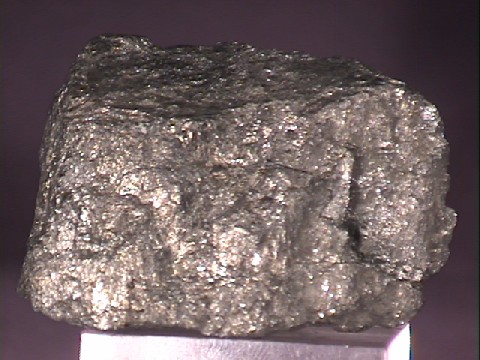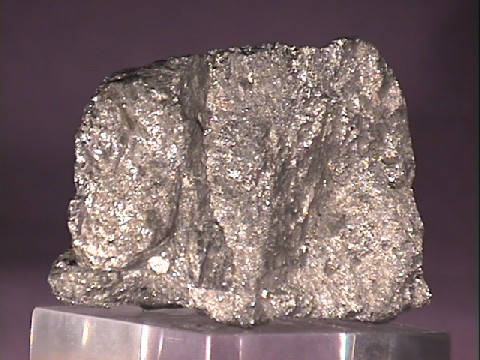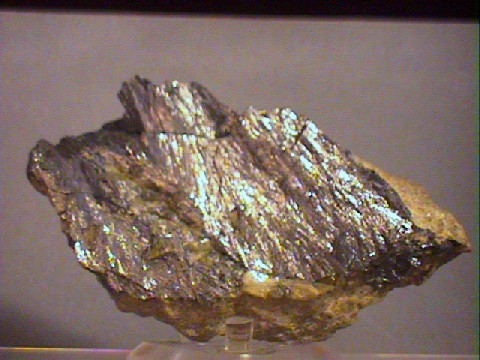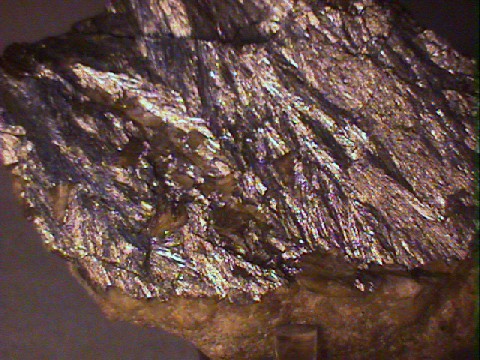 THE
MINERAL LOLLINGITE
THE
MINERAL LOLLINGITE
- Chemistry: FeAs2, Iron Arsenide.
- Class: Sulfides
- Subclass: Arsenides
- Group: Marcasite and Lollingite
- Uses: As a minor ore of arsenic and as mineral specimens.
Specimens
Lollingite, or as it is alternatively spelled loellingite, is an uncommon mineral, but is found with other arsenides and thus it is included with them when mined for arsenic. It is often associated with arsenopyrite, FeAsS, and this is unfortunate as it is difficult to distinguish between the two. Their crystal forms, color, luster, streak and fracture are all very similar. Lollingite is at least somewhat softer and denser. Lollingite's composition is never exactly FeAs2, because it usually contains significant percentages of cobalt and nickel and sometimes sulfur.
Lollingite gives its name to a group of minerals of which the mineral lollingite is one of the more common members. Members of the Lollingite Group have a simple formula, namely: AX2. Where the metal ion, A, is either cobalt, nickel and/or iron and the X can be either arsenic and/or antimony with some members having some sulfur. All members of the group have lollingite's basic structure. They are all orthorhombic in symmetry and are very uncommon to rare in occurrence. Some classification schemes place Lollingite Group members in the Marcasite Group.
These are the members of the Lollingite Group:
Costilbite (Cobalt Antimonide Sulfide)- Lollingite (Iron Arsenide)
Nisbite (Nickel Antimonide)- Rammelsbergite (Nickel Arsenide)
- Safflorite (Cobalt Iron Arsenide)
Seinajokite (Iron Nickel Antimonide Arsenide)
PHYSICAL CHARACTERISTICS
- Color is silver white to gray (tarnishes to a darker color).
- Luster is metallic.
- Transparency: Crystals are opaque.
- Crystal System is Orthorhombic; 2/m 2/m 2/m
- Crystal Habits include prismatic to stubby crystals with a chisel-like domal termination. A crystal's cross-section will be diamond-shaped with rounded oblique angles. Elongated wedge shaped crystals are seen when the domal termination becomes dominant. Also compact, massive and disseminated in veins fillings. Twins are seen as star shaped trillings.
- Cleavage is indistinct (basal).
- Fracture: Uneven.
- Hardness is 5 - 5.5
- Specific Gravity is approximately 7.1 - 7.5 (well above average for metallic minerals)
- Streak is a gray black.
- Other Characteristics: Crystals are commonly striated lengthwise.
- Associated Minerals include arsenopyrite, pyrrhotite, chalcopyrite, biotite, analcime, sodalite, vesuvianite, calcite and siderite.
- Notable Occurrences include Lolling (hence the name), Huttenburg, Carinthia, Austria; Harz, Germany; Franklin, New Jersey; Cobalt, Connecticut; Gunnison Co., Colorado; Alexander Co., North Carolina and Arizona, USA; Ontario, Canada; Norway; Sweden; Finland; Czech Republic; Poland and Brazil.
- Best Field Indicators are crystal habits, color, associations, streak, hardness, striations and density.






